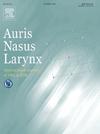声带再生疗法的基础和临床研究综述。
IF 1.6
4区 医学
Q2 OTORHINOLARYNGOLOGY
引用次数: 0
摘要
目的回顾声带再生的各种基础研究和治疗方法,探讨未来治疗的方向:在 PubMed 数据库和 Google Scholar 上进行了全面综述,使用的搜索词包括以下概念的组合和变体:声带解剖学、声带疾病和再生疗法。由于这篇叙述性综述文章的性质,没有设定特定的纳入或排除标准:针对声带各层的再生疗法如下:1) 用于上皮层的表皮生长因子和转化生长因子-β1;2) 自体成纤维细胞、自体骨髓间充质干细胞(MSCs)、自体脂肪组织基质血管成分(ADSVF)、碱性成纤维细胞生长因子(bFGF)、胶原-透明质酸纳米纤维、3) 用于固有层的 bFGF 和控释 bFGF,以及自体筋膜、HGF、c-Met 激动剂抗体和 PRP;4) 用于神经的 bFGF 和 PRP 负载神经引导导管。HGF和PDL被认为是临床安全的治疗方法,疗效可持续6个月,而bFGF、自体成纤维细胞、自体骨髓间充质干细胞、ADSVF和PRP的研究则长达12个月:结论:理想的再生治疗方法是恢复声带受伤或丧失的部分。声带的分层结构为这些再生疗法提供了多种作用机制。还需要进一步的实验和临床研究,这些研究将决定声带再生疗法的影响。再生医学可能很快就会成为治疗声带疾病的前沿技术。临床医生应该对治疗方法的进步持开放态度,并考虑新疗法治疗特定病症的潜力。本文章由计算机程序翻译,如有差异,请以英文原文为准。
A narrative review of basic and clinical studies for vocal fold regeneration therapies
Objective
To review the various basic research and treatments available to regenerate the vocal folds and to discuss the direction for future treatments.
Methods
A comprehensive review was performed in PubMed database and Google Scholar utilizing search terms including combinations and variations of the following concepts: vocal fold anatomy, vocal fold disorders, and regenerative therapies. No particular inclusion or exclusion criteria were set due to the nature of this narrative review article.
Results/Discussion
The regenerative treatments available for each vocal fold layer are the following: 1) epidermal growth factor and transforming growth factor-β1 for the epithelial layer, 2) autologous fibroblasts, autologous bone-marrow derived mesenchymal stem cells (MSCs), autologous adipose tissue-derived stromal vascular fraction (ADSVF), basic fibroblast growth factor (bFGF), collagen-hyaluronic acid nanofiber, pirfenidone, hepatocyte growth factor (HGF), pulsed dye laser (PDL), diode laser, and platelet-rich plasma (PRP) for the lamina propria, 3) bFGF and controlled-release bFGF with autologous fascia, HGF, c-Met agonistic antibody, and PRP for the muscular layer, 4) and bFGF and PRP-loaded nerve guidance conduit for the nerve. Treatments deemed clinically safe with sustained efficacy assessed up to 6 months are HGF and PDL, while bFGF, autologous fibroblasts, autologous bone marrow-derived MSCs, ADSVF, and PRP have been studied up to 12 months.
Conclusion
An ideal regenerative treatment is one that restores the injured or lost components of the vocal fold. The layered structure of the vocal fold allows for several mechanisms of action for these regenerative therapies. Further experimental and clinical studies are warranted, and these would dictate the impact of vocal fold regenerative therapies. Regenerative medicine may soon be at the forefront for treating vocal fold disorders. Clinicians should be open to advancements in treatment and consider the potential of novel therapies to treat specific pathologies.
求助全文
通过发布文献求助,成功后即可免费获取论文全文。
去求助
来源期刊

Auris Nasus Larynx
医学-耳鼻喉科学
CiteScore
3.40
自引率
5.90%
发文量
169
审稿时长
30 days
期刊介绍:
The international journal Auris Nasus Larynx provides the opportunity for rapid, carefully reviewed publications concerning the fundamental and clinical aspects of otorhinolaryngology and related fields. This includes otology, neurotology, bronchoesophagology, laryngology, rhinology, allergology, head and neck medicine and oncologic surgery, maxillofacial and plastic surgery, audiology, speech science.
Original papers, short communications and original case reports can be submitted. Reviews on recent developments are invited regularly and Letters to the Editor commenting on papers or any aspect of Auris Nasus Larynx are welcomed.
Founded in 1973 and previously published by the Society for Promotion of International Otorhinolaryngology, the journal is now the official English-language journal of the Oto-Rhino-Laryngological Society of Japan, Inc. The aim of its new international Editorial Board is to make Auris Nasus Larynx an international forum for high quality research and clinical sciences.
 求助内容:
求助内容: 应助结果提醒方式:
应助结果提醒方式:


